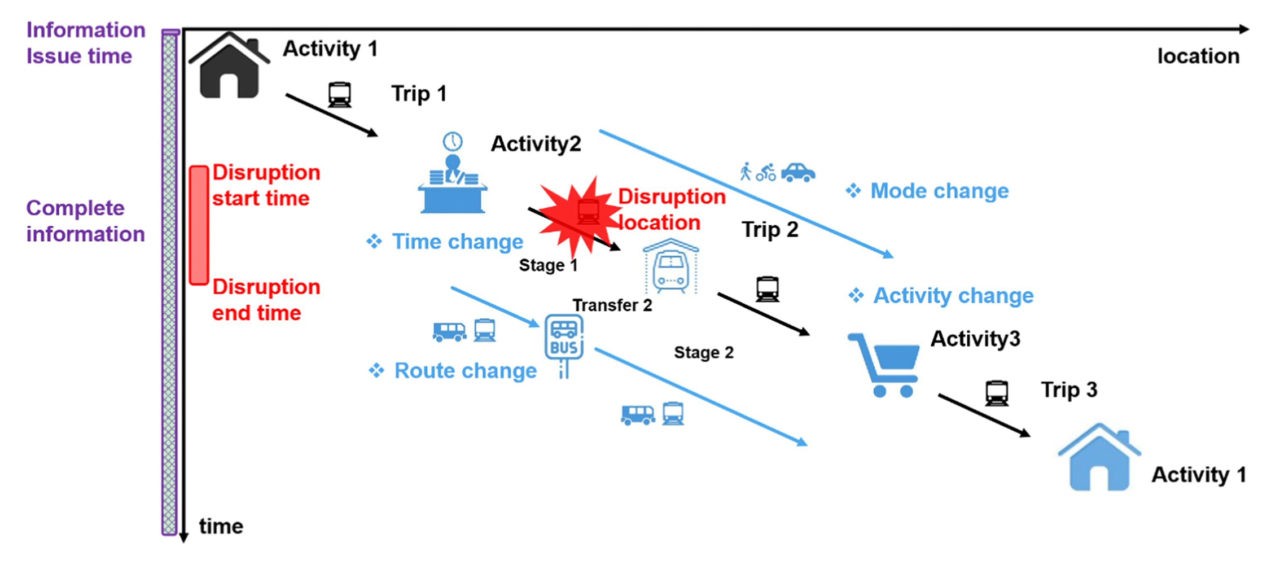
Nuannuan Leng, Francesco Corman
2020
Full article on Science Direct
In public transport disruptions, a key relation between the services of operating company and passengers’ satisfaction is the disseminated information. This paper proposes rigorous mathematical descriptions to describe the effects of information availability to passengers, including the user equilibrium and non-equilibrium solutions.
The information availability in disruption is summarised in a “who-when-where-what” four-dimensional framework. Based on different information, passengers’ behaviours are assumed and simulated to evaluate the benefits of information availability in public transport disruption. An agent-based micro-simulation model (MATSim) is applied for the city of Zürich, Switzerland, for the benefit of activity-based simulation in a multi-modal network. We use an existing day-to-day replanning method, and extend the study with a within-day replanning approach in MATSim, to study agents’ route choices responding to public transport disruption in one single iteration. The disruption is assumed as a rail track blockage between Zürich HB and Zürich Oerlikon via both Zürich Wipkingen and Zürich Hardbrücke. One benchmark of agents’ behaviours without disruption and other three scenarios based on different information are simulated. Statistic results are analysed for all the agents who may be involved in the defined disruption. Agents’ flow in related transit routes and transport modes shows their adaptations to the corresponding information availability. Agents’ delays and scores reveal that information significantly impacts agents’ satisfaction in public transport disruption.